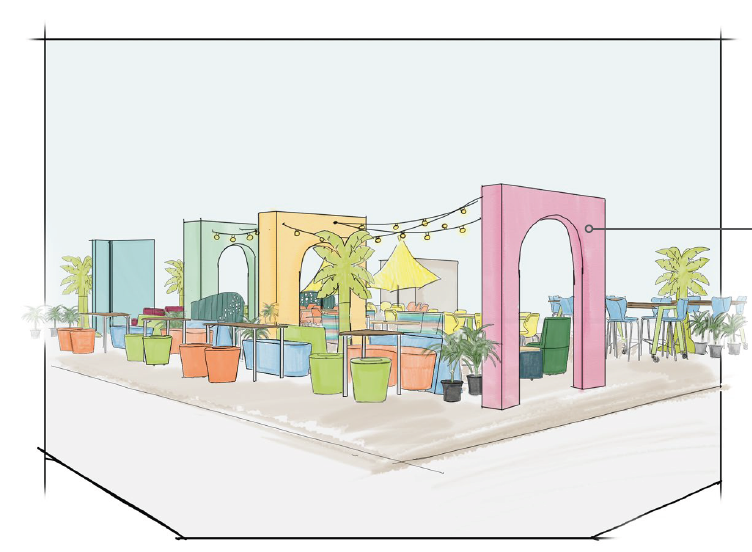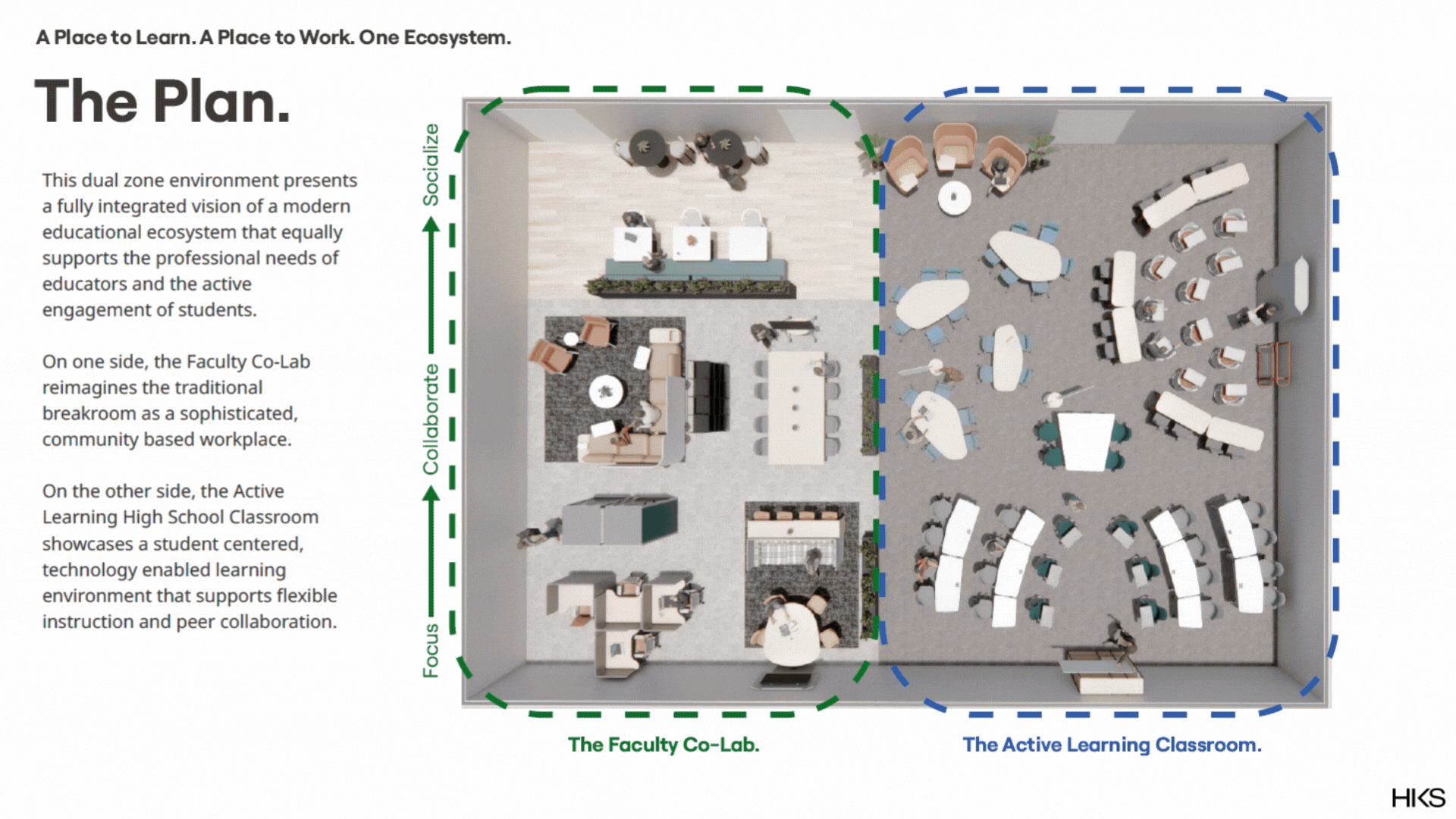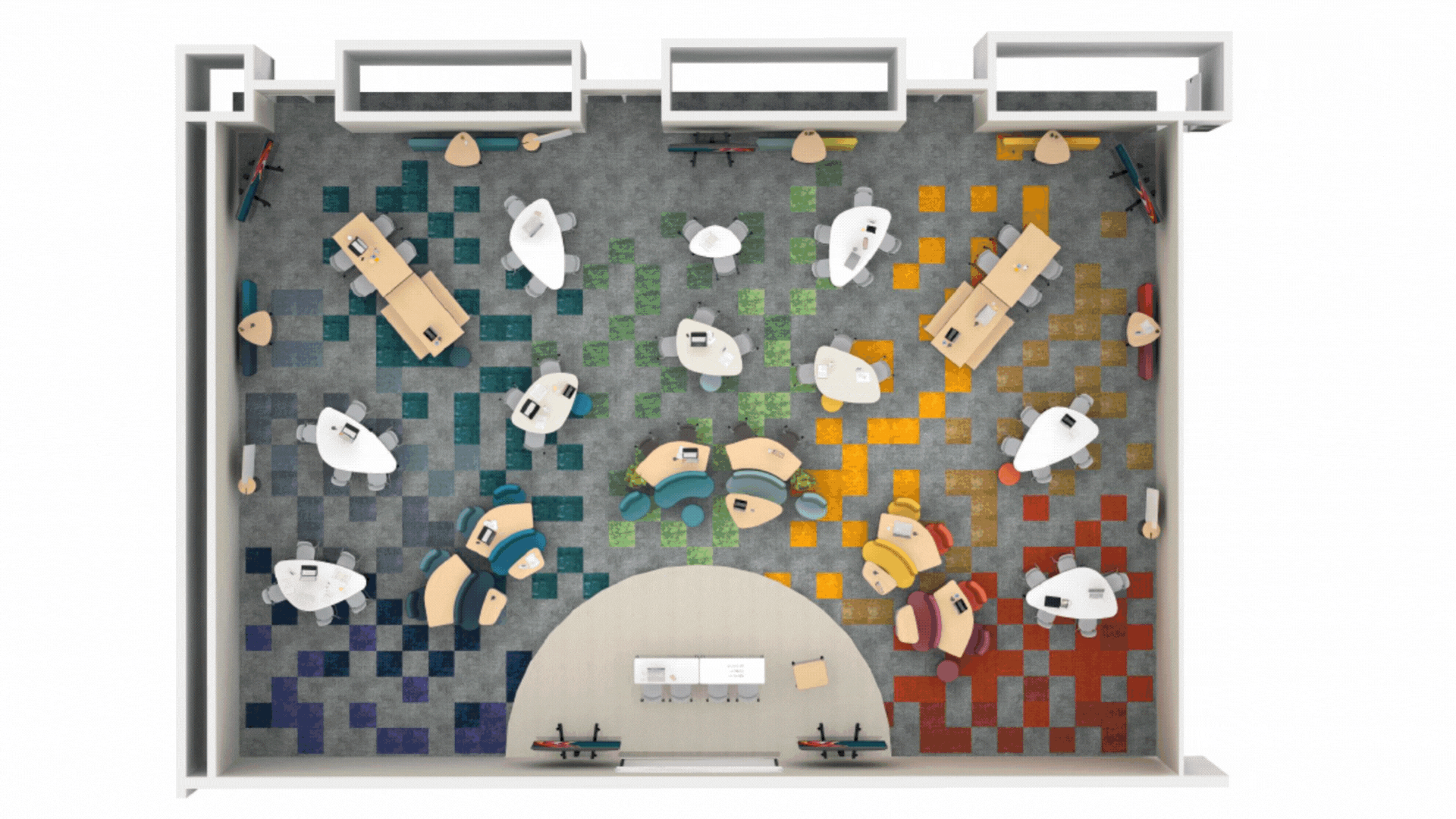2025 Designed Learning Spaces
The Designed Learning Spaces at EDspaces are fully realized, interactive classroom environments that demonstrate the latest trends in educational design. Created in collaboration with architects, designers, manufacturers, and dealers/distributors, these spaces are unique to EDspaces because they bring to life innovative concepts in flexible, student-centered learning environments. Attendees can explore and interact with these spaces, experiencing how furniture, technology, and design elements come together to foster collaboration, creativity, and engagement in real-world educational settings.
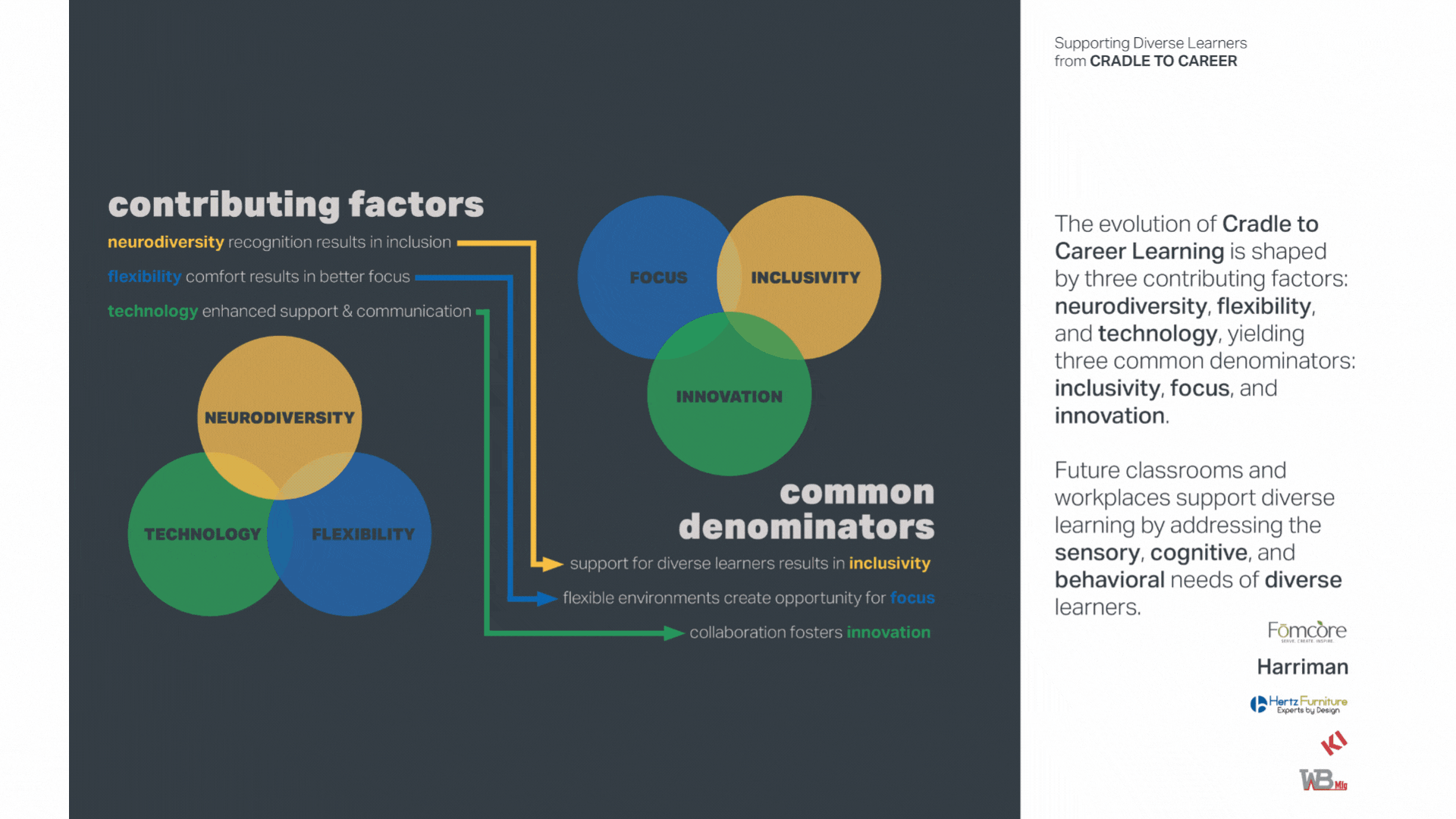
Classroom A 120: Harriman-Hertz Furniture | Supporting Diverse Learners from Cradle to Career
Goal:
Future classrooms and workplaces support diverse learning by addressing the sensory, cognitive, and behavioral needs of diverse learners.
3 Factors that contributed to the Evolution:
1.Diverse Learners
2. Flexibility
3. Technology
PK-12 Evolution:
1. New Pedagogies (‘guide on the side’ teaching style)
2. Diverse Learner Recognition (inclusion)
3. Flexible Learning Environment (comfort for focus)
Higher Ed Evolution:
1. Collaboration (team-based learning)
2. Cross Disciplinary Cooperation (STEM, STEAM)
3. Communication (technology, hybrid learning)
Workplace Evolution:
1.Flexible Work Style (varied spaces, hybrid work)
2.Collaboration (diversity fosters innovation)
3.Transparency (promotes group collaboration)
Focus:
Sensory needs are addressed in the furnishings of future classrooms and workplaces. Furniture with materials and finishes that are biophilic – connected to nature, mentally soothing in color choices, sensory soothing in various textures, and behaviorally soothing in functional flexibility.
Placement of furniture within spaces address various types of comfort levels in learning. Collaborative spaces for group interaction are centrally focused while areas to observe are located at the entry. And finally, areas to retreat and reflect are located deeper in the space on the perimeter.
Impact:
The three factors that contribute to the evolutions of Cradle to Career Learning; Neurodiversity, Flexibility, and Technology result in three common denominators – Inclusivity, Focus, and Innovation.
3 Common Denominators from the Evolution
1. Support for diverse learners results in INCLUSIVITY
2. Flexible Environments create opportunity for FOCUS
3. Collaboration fosters INNOVATION
Partners:
Hertz Furniture, Fomcore
Classroom C 160A: HKS | A Place to Learn. A Place to Work. One Ecosystem.
Goal:
Design for all who teach and all who learn. This dual-zone experience reflects a modern vision for schools as complete ecosystems. One side showcases a dynamic, active learning environment where students engage with movement, voice, and collaboration. The other affirms that faculty deserve more than a breakroom, they need sophisticated workspaces to think, work, and restore. Together, these zones create a more equitable and functional vision of what school can be.
Focus:
Wellness for Teachers. Engagement for Students. Design for Both. Just as corporate employees are supported by a spectrum of work settings, from focus zones to wellness rooms, teachers deserve thoughtfully designed spaces for planning, decompressing, meeting with parents, and collaborating with peers. The Faculty Co-Lab spaces signal respect for their expertise and help create the mental clarity and community that great teaching demands. Meanwhile, the Active Learning Classroom empowers students with flexible furniture, interactive technology, and open configurations that foster deeper participation. This design responds to the everyday rhythms of school life, offering spatial tools that support real people doing real work.
Impact:
Designing with Empathy: Design that reflects the people inside. When we support teachers as professionals, we strengthen their ability to support students. When we give students agency and flexibility, they engage more deeply. The Clarus Lync system, Steelcase mobility solutions, and Lightspeed Redcat audio work together to create a responsive, inclusive environment that promotes clarity, connection, and creativity.
Partners:
Steelcase, Clarus, Lightspeed, Milliken
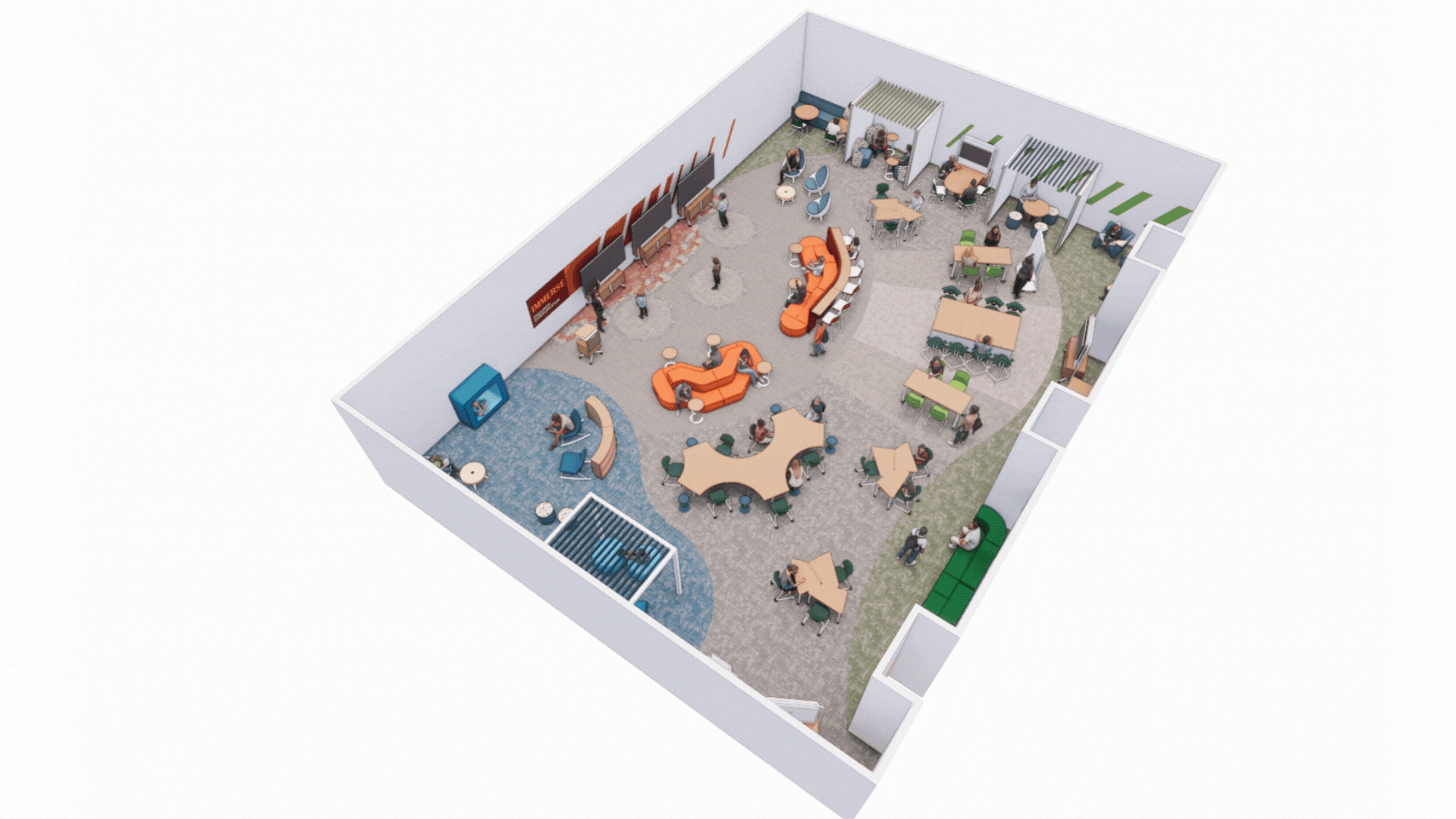
Classroom A 210: Moody Nolan | Responsive Learning
Goal:
Our goal is to create a responsive learning environment that adapts to the individual needs of each student and encourages learning through collaboration rather than isolation. We aim to support the needs of students and teachers through a space designed for flexible teaching and meaningful student interaction at every stage of the learning process. Learning objectives include supporting students in developing executive functioning skills, navigating transitions, engaging purposefully with peers, and identifying environments that align with their cognitive and emotional needs.
Focus:
This learning environment contains a layout centered on fluid movement between three thematic zones: Discover, Immerse, and Reflect. These zones are not fixed or separated; instead, they transition naturally into one another, allowing students and educators to shift between modes of engagement based on task, focus, or energy level. Discover supports structured inquiry and guided exploration without the rigidity often found in traditionally compartmentalized classrooms, through reconfigurable tables and flexible furniture. Immerse is bold and energetic, built for individual exploration and group collaboration with minimal furniture making the space open and adaptable. Reflect, by contrast, is a quiet zone defined by soft hues and calming textures designed to slow down, decompress, and reset with secluded seating, soft materials and limited technology.
Impact:
The classroom’s open layout and flexible zoning support movement and encourage collaboration. Students move freely between Discover, Immerse, and Reflect based on task, focus, and learning preference. Reconfigurable furniture allows quick transitions between individual work, small group collaboration, and whole-class engagement, making the space adaptable to both student and instructional needs. Technology is largely centralized to support mobility and shared use but can be distributed across zones. The integration of design and technology reduces barriers to interaction and creates multiple entry points for collaboration, adaptable to varying goals and energy levels.
Partners:
HDA Hansen Distribution Agency, Martin Public Seating, KI, Fomcore, Pallas Textiles, and Interface
Classroom A 113: DLR Group + Smith System | Discovering Joy
Goal:
Joy in learning spaces isn’t a byproduct of bright colors or playful shapes, it’s creating a balance that helps students feel calm, focused, and connected. Overly intense colors can overwhelm, raising stress and making it harder to concentrate. Thoughtful use of color turns physical space into a learning tool.
- Cool blues and violets foster quiet focus and restoration.
- Soft greens support comfort and balance.
- Warm yellows bring energy but need moderation.
- Reds spark excitement and engagement.
For educators, this translates to more than aesthetics. Color can:
- Help students self-regulate (“I need a calming spot”).
- Encourage empathy and collaboration (“let’s move where it’s easier to focus”).
- Give students ownership of their environment, building confidence and agency in learning.
In this way, color becomes part of the learning infrastructure by guiding behavior, supporting emotional safety, and shaping joyful, co-created learning rhythms. When people share experiences together, their feelings of joy become stronger. In schools or community spaces, furniture and interior environments can support this by encouraging people to gather. These design choices amplify
Focus:
The “Discovering Joy” Classroom is designed to celebrate connection and community. Scaled with intention, the room features tiered furnishings so that every seat truly feels like the best seat in the house, offering clear sightlines to presenters, visual displays, and peers alike. Flexible groupings foster meaningful dialogue among attendees while also enabling presenters to move seamlessly through the space, strengthening personal connections with their audience. Multiple digital monitors ensure content is always accessible, no matter where participants are located. The material palette blends warm wood tones and light neutrals with biophilic -inspired forms, grounding the space in a sense of calm and natural connection. These organic shapes set the stage for immersive sensory experiences, where flooring and lighting introduce subtle cues of color. Within the room, color “zones” invite attendees to gravitate toward the environments that best align with their needs whether for focus, reflection, or energized collaboration. The result is a learning environment where design not only supports function, but also nurtures joy, belonging, and emotional well-being.
Impact:
What if color became more than a backdrop…what if it became a form of emotional intelligence within our classrooms? In joyful learning environments, color is not just visual; it is instructional. By treating color as a language of emotional literacy, we give students tools to recognize, regulate, and even co-create their own learning conditions. They begin to understand that blue invites calm, green restores balance, yellow activates energy, and red sparks excitement. In doing so, students gain agency by choosing environments that fit their needs and supporting the needs of others. For educators and designers alike, this shifts color from decoration to a framework for well -being, collaboration, and growth by embedding emotional intelligence into the very fabric of learning space design.
Partners:
DLR Group, Smith System, Steelcase, Patcraft, ClearTouch, Pro AV, Insight Lighting
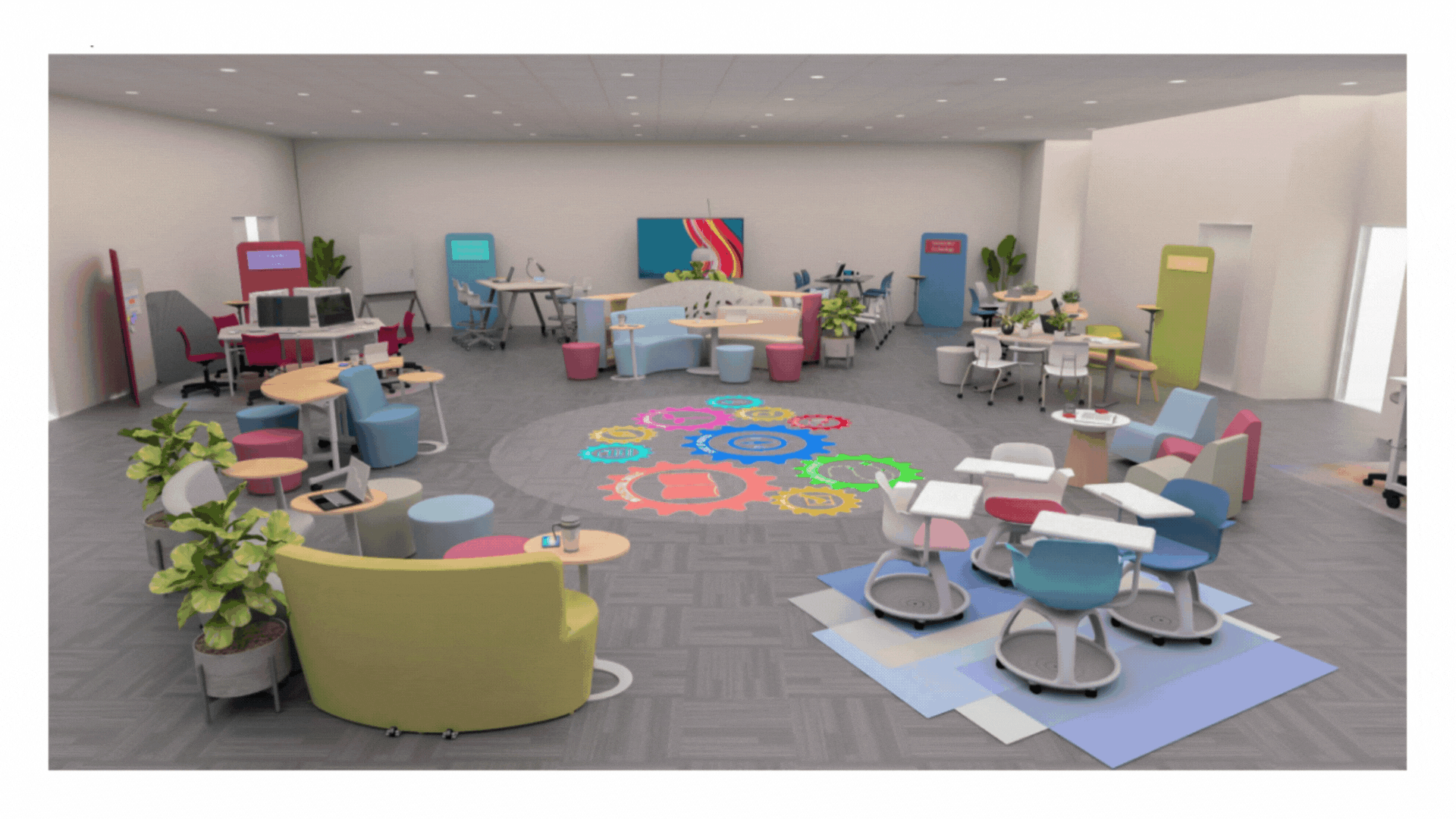
Classroom B 131: Schmidt Associates | Career Readiness and Beyond
Goal:
The goal of a Career Readiness Classroom is to prepare students with the skills, knowledge, and mindset they need to successfully transition from school into the workforce, higher education, or career technical (CTE) training programs. This preparation goes beyond academic learning to focus on practical, real-world competencies, bridging the gap between school and life after high school or postsecondary education. Career readiness can equip students with the tools and confidence they need to enter and thrive in the workforce. Our goal is to create environments that foster engagement and enthusiasm, cultivating student interest in CTE programming.
This space is designed to show how furnishings that support career technical education programming can be easily integrated into an existing space. Vignettes have been created to represent some of the most popular technical programs across the country. These thoughtfully curated pieces offer flexibility and adaptability, offering implementation across grade levels. We hope this space will spark curiosity and engagement!
Focus:
The focus of the career readiness classroom in the K-12 environment is to introduce students to the basic skills and tools needed to accompany a specific career track. As students progress through the program, their understanding of key concepts through hands-on experience deepens and propels them toward success in post-secondary education, training and beyond. A successful career readiness classroom can align the pathways between academic learning and the evolving demands of the workforce, ensuring students leave prepared, adaptable, and empowered in their future pursuits.
This type of environment emphasizes real-world application and practical life skills, preparing students to transition from school to career with confidence. It equips them with a clear understanding of employer expectations and the ability to successfully navigate professional environments or pursue further education and training.
These technical areas of study provide students with opportunities to investigate various career pathways, industries, and emerging fields.
Impact:
The transferable skills gained from the classroom extends beyond preparing students for immediate employment after high school; it cultivates the mindset and direction necessary to thrive in an ever-evolving world. This impact reaches beyond the individual learner, benefitting schools and the broader community.
Students can develop workplace habits such as time management, teamwork, and communication as well as problem-solving abilities needed to thrive in dynamic environments. The career readiness classroom equips students with direction to succeed beyond graduation, while strengthening schools and contributing to the long-term vitality of the community and workforce.
Partners:
Schmidt Associates, Steelcase, Smith Systems, Business Furniture, Mohawk Group
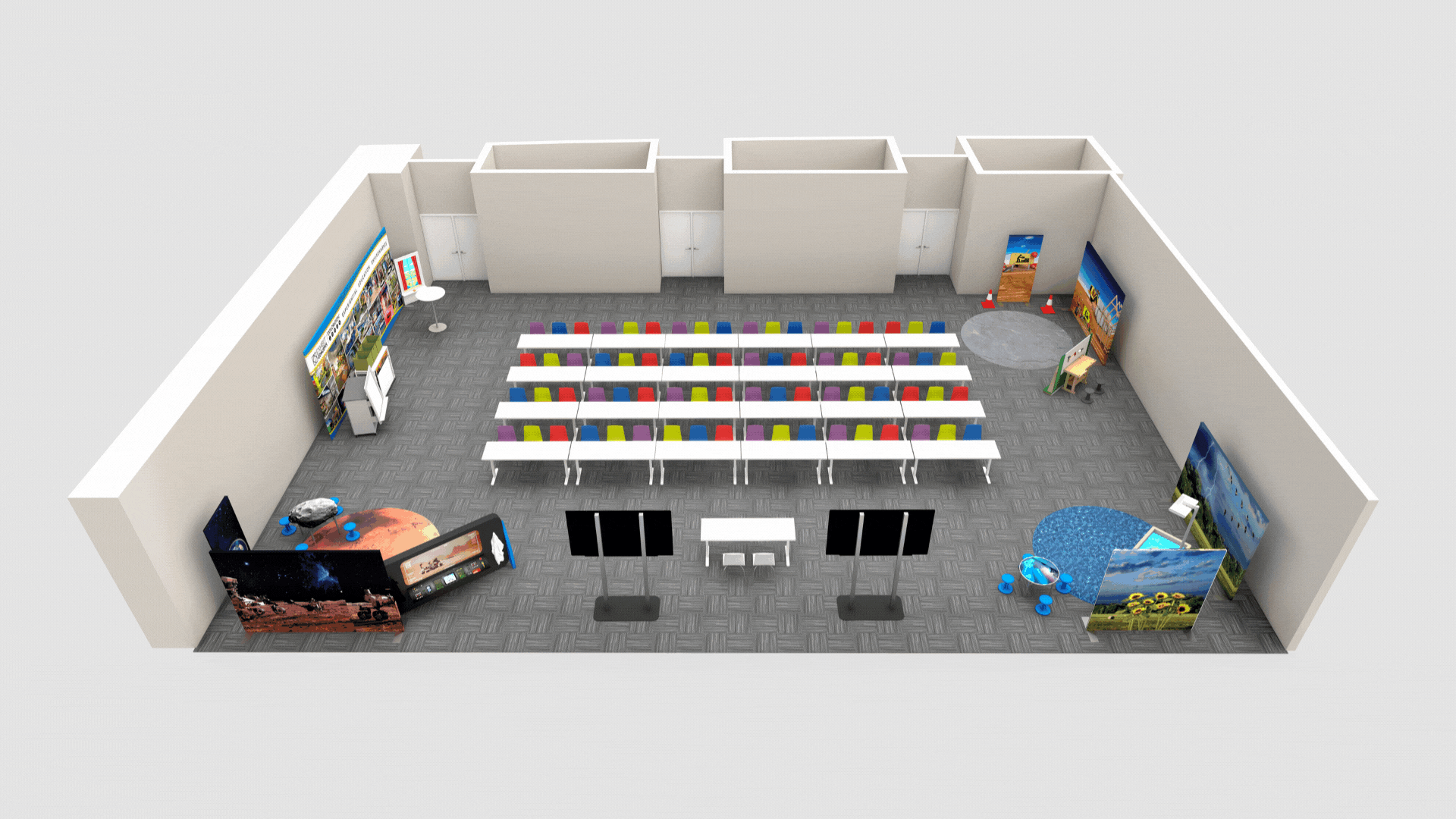
Classroom B 230: Exhibit Concepts | Exploration Zones: Experiential and Flexible Learning
Goal:
This classroom demonstrates how immersive, theme-based environments can transform learning by sparking curiosity and connecting lessons to real-world experiences. Designed with flexibility and customization in mind, the space shows how educators can move fluidly between whole-group instruction, small-group collaboration, and hands-on exploration. Informed by consecutive years of award-winning designs, Exploration Zones by Exhibit Concepts highlights the role of intentional space planning in supporting both students and educators.
Focus:
The focus of this classroom is on experiential learning environments and flexibility. Six unique early learning themes, ranging from community-based learning (Construction and Farm-to-Table) to global navigation (Space and Our World),illustrate how storytelling and design can bring curriculum to life. Classrooms are intentionally planned to foster language, literacy, and math through hands-on exploration, while also aligning with district curriculum goals. For students, these environments encourage agency, creativity, and critical thinking. For administrators and architects, the space provides a chance to experience how design decisions directly impact inclusivity, adaptability, and long-term success.
Impact:
Experiential, hands-on environments not only spark curiosity in young learners but also build the cognitive and interpersonal skills they need well beyond early learning. While this room is outfitted as a Pre-K/K classroom, the same design principles apply across middle school, high school, and CTE spaces, as well as in mobile and destination environments. Experiencing these environments at EDspaces gives decision-makers insight into how flexible, story-driven classrooms can foster deeper engagement, strengthen community support, and provide scalable models that meet evolving educational needs at every stage of learning.
Partners:
Exhibit Concepts, Inc.
